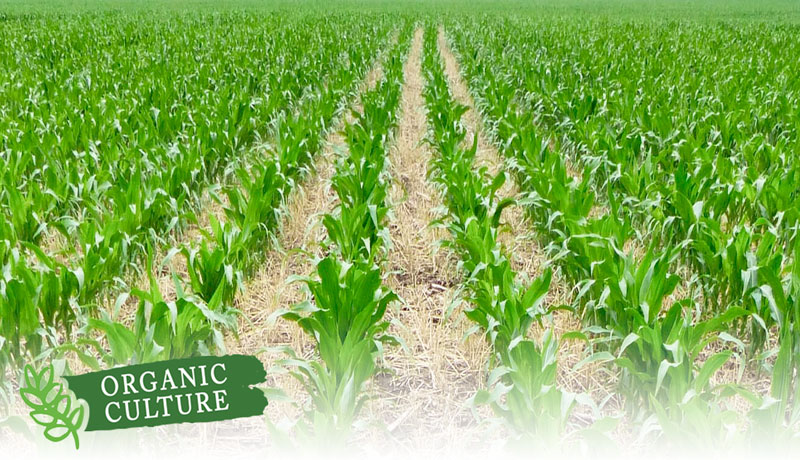No-tillage farming is a farming technique that has gained popularity in recent years due to its numerous benefits. This technique involves planting crops without tilling the soil, which means that the soil is left undisturbed. No-tillage farming is an environmentally friendly technique that helps to reduce soil erosion, improve soil health, and increase crop yields.
One of the main advantages of no-tillage farming is that it helps to reduce soil erosion. When soil is tilled, it is exposed to the elements, which can cause it to erode. This can lead to a loss of nutrients and a decrease in soil quality. No-tillage farming helps to prevent soil erosion by leaving the soil undisturbed. This allows the soil to retain moisture and nutrients, which can help to improve soil health.
Another advantage of no-tillage farming is that it can help to increase crop yields. When soil is tilled, it can disrupt the soil structure and cause compaction. This can make it difficult for crops to grow and can lead to a decrease in yields. No-tillage farming helps to maintain the soil structure, which can improve soil aeration and water infiltration. This can lead to healthier crops and higher yields.
Overview of No Tillage Farming
Definition
No tillage farming, also known as no-till agriculture, is a conservation tillage technique that eliminates or minimizes soil disturbance during planting. Instead of using a plow to turn over the soil, farmers leave the soil undisturbed and plant seeds directly into the soil. This agricultural technique involves the use of herbicides, cover crops, and crop residue to manage weeds, improve soil health, and increase crop yields.
Benefits
No tillage farming offers several benefits over traditional tillage farming. One of the primary benefits is reduced soil erosion, as the undisturbed soil helps to hold onto water and prevent runoff. This technique also helps to improve soil health by increasing soil organic matter, nutrient cycling, and earthworm populations. Additionally, no tillage farming can reduce fuel consumption and costs associated with diesel fuel, as well as reduce soil compaction and the need for irrigation.
Challenges
While no tillage farming offers many benefits, it also presents some challenges. One of the primary challenges is weed management, as the use of herbicides can lead to the development of herbicide-resistant weeds. Additionally, the timing of planting and the use of cover crops can be challenging, especially in dry weather conditions. Finally, no tillage farming requires proper management of crop residue and the use of a roller crimper to terminate cover crops.
Overall, no tillage farming is a sustainable agricultural technique that has gained popularity in recent years due to its ability to reduce soil erosion, improve soil health, and increase crop yields. By using cover crops, crop residue, and other conservation practices, farmers can successfully implement no tillage farming and reap the benefits of this regenerative agricultural technique.
How No Tillage Farming Works
Principles
No tillage farming is a method of crop production that involves planting seeds directly into the soil without disturbing it through tillage. The goal is to maintain the natural structure of the soil, preserve its natural resources, and reduce erosion. No tillage farming is based on three principles:
- Minimal soil disturbance
- Continuous soil cover
- Crop rotation
Equipment
No tillage farming requires specialized equipment to plant seeds directly into the soil without disturbing it. Some of the essential equipment includes:
- No-till planters
- No-till drills
- No-till cultivators
- No-till seeders
Techniques
No tillage farming techniques involve the following steps:
- Crop residues from the previous season are left on the soil surface to protect the soil from erosion and maintain moisture levels.
- The soil is not tilled, but small holes are made in the soil to plant seeds.
- Seeds are planted directly into the soil, without disturbing it.
- A cover crop is planted after the main crop is harvested to protect the soil from erosion and maintain moisture levels.
No tillage farming has several benefits, including:
- Reducing fuel consumption and costs associated with tillage
- Reducing soil erosion and water runoff
- Improving soil health and fertility
- Reducing the need for synthetic fertilizers and pesticides
- Lowering labor costs associated with tillage
No tillage farming is a science that requires careful planning and execution. Farmers should seek advice from researchers and experienced no-till farmers to develop a successful no-tillage system that works for their specific crops and soil types.
No Tillage Farming Around the World
No tillage farming, also known as conservation agriculture, has been gaining popularity around the world. This farming technique involves planting crops without tilling the soil. Instead, farmers use special equipment to create small holes in the soil where the seeds are planted. No tillage farming has many benefits, including reduced erosion, improved soil health, and increased crop yields.
North America
In the United States, no tillage farming has become increasingly popular in the Midwest and Great Plains regions. According to the USDA, over 35% of cropland in the United States is now managed using no tillage techniques. The adoption of no tillage farming has been driven by government incentives, cost savings, and environmental concerns.
South America
South America is a major producer of no tillage crops, with Argentina and Brazil leading the way. In Argentina, no tillage farming has been widely adopted due to the country’s dry climate and the need to conserve water. According to a study published in Science Direct, no tillage farming has helped to reduce soil erosion and improve soil health in Argentina. In Brazil, no tillage farming has become popular due to the country’s large-scale soybean production.
Australia
No tillage farming has been used in Australia for over 40 years. According to the Australian Government, over 80% of the country’s cropland is now managed using no tillage techniques. No tillage farming has helped to improve soil quality and reduce erosion in Australia’s fragile soils.
Africa
No tillage farming has been gaining popularity in Africa in recent years. According to the Food and Agriculture Organization of the United Nations, no tillage farming has been successful in increasing crop yields in many African countries, including Zambia, Zimbabwe, and Malawi. No tillage farming has also helped to reduce labor costs and improve soil health in these countries.
Overall, no tillage farming has become a popular farming technique around the world. Its benefits are undeniable, and it is likely that more farmers will adopt this technique in the coming years.

